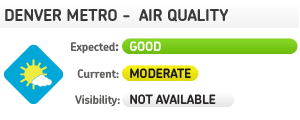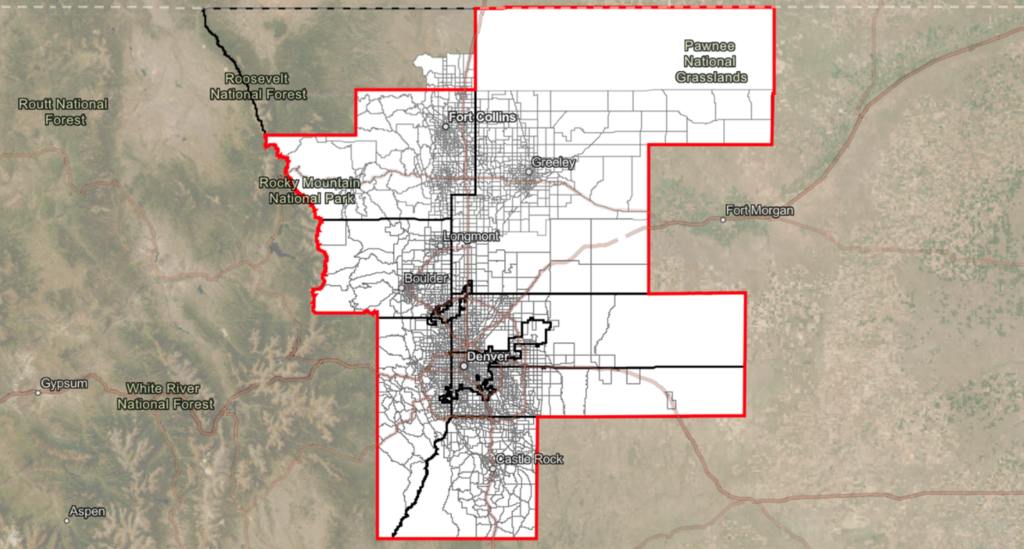Air Quality Planning
Why Is Air Quality Planning Important?
Air quality (AQ) planning means creating goals and measures and implementing plans to improve air quality. The RAQC’s mission is to develop clean air plans and evaluate potential air pollution control strategies to reduce regional emissions and protect public health. Since the late 1990’s the primary pollutant of concern in the Denver Metro/North Front Range (DM/NFR) region has been ground-level ozone, which has significant effects on public health, the environment, and climate change. The U.S. Environmental Protection Agency (EPA) establishes National Ambient Air Quality Standards (NAAQS) that all regions must work to attain. The DM/NFR region is currently in nonattainment for the 2008 standard of 75 parts per billion (ppb) and the 2015 ozone standard of 70 ppb. In order to attain both of these standards, the Clean Air Act outlines specific requirements regions must meet in order to ensure timely attainment of the standards. The region previously was in nonattainment for earlier ozone standards as well as particulate matter and carbon monoxide standards but has since attained these standards. For more on the basics of the air quality issues that the RAQC’s planning work focuses on, please visit our FAQ page that provides an overview of the pollutants we are combating and the causes of air pollution.
The RAQC Planning Region
The Denver Metropolitan/North Front Range nonattainment region for ozone includes nine counties: Adams, Arapahoe, Boulder, Broomfield, Denver, Douglas, Jefferson, Weld and a portion of Larimer Counties. Please note only a portion of Weld is included in the 2008 standard while all of Weld is included in the 2015 standard. These counties are included because they have higher ozone levels than the rest of Colorado.
RAQC Planning Partners
The RAQC, through its planning process, works with state agencies, local government, industry, environmental groups, and citizens to develop clean air plans, otherwise known as State Implementation Plans (SIP), for the DM/NFR ozone nonattainment area and evaluate the impact of various emissions reduction strategies at reducing ozone levels in the region. These plans and analyses are vetted through the RAQC’s Control Strategy Committee and related workgroups before going before the RAQC Board of Directors. More information on specific plans and efforts can be found on the SIPs page.
The RAQC partners closely with Colorado Department of Public Health and Environment’s Air Pollution Control Division (APCD) on its planning work. APCD enforces the state’s air pollution laws and implements its plans, including SIPs, works to improve air quality, and provides air quality data, forecasts, and alerts for the public and for the SIP planning process.
AQ Planning at the RAQC
The RAQC’s air quality planning work can be divided into three main categories. More information on each area is available at the links below.
- Development of State Implementation Plans to comply with federal air quality standards
- Evaluation and implementation of air pollution Control Strategies to reduce emissions
- Air Quality Planning Technical Analysis and Data to inform the RAQC’s partners and the public about the details of the RAQC’s ozone tracking and modeling efforts. The RAQC tracks ozone levels to monitor progress towards attaining ozone standards and models future levels to verify that future emissions will fall below ozone standards.
How to Get Involved
The RAQC welcomes participation from stakeholders and the public in its planning work. The links below lead to pages to register for meetings and mailing lists. All upcoming meetings are also available in one place on the RAQC calendar.
- Control Strategy Committee (CSC): Focused on evaluating and advancing emission reduction measures that will improve our region’s air quality, including those that will be included in the SIP. The CSC meets monthly.
- The RAQC also stands up workgroups on discrete control strategy topics as relevant. More information on active and historic workgroups is available on the CSC page.
- RAQC Board Meetings: The RAQC Planning Team provides updates on its work regularly at monthly Board meetings.
- Ozone Attainment Forums: Focused on the technical modeling and analysis work needed to support the SIP process and attain the ozone standards.
You may also get in touch with RAQC Planning Team staff if you have questions or ideas on how to collaborate.



